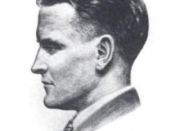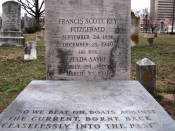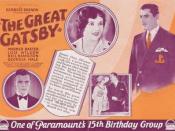The 1920s were a time when radio was a desired household item, women got the right to vote, no one paid attention to prohibition in the cities, and entertainment created much of the excitement at this time. Someone who stood out during the Jazz Age decade was author, F. Scott Fitzgerald. He wrote many books during this time and is very well known for the 1925 novel, The Great Gatsby. Fitzgerald's fiction was semiautobiographical and before anyone knew it, he was an overnight success. His most famous book, The Great Gatsby resembled Fitzgerald's real life persona. The main character of the story, Jay Gatsby is still madly in love with Daisy Buchanan and would do anything to get her back. When Gatsby finally meets with Daisy again after five years, he confesses his love to her even though she is married to Tom Buchanan and has a child. Gatsby still continues to passionately love Daisy no matter what.
In the end he looses his life due to a mistake. F. Scott Fitzgerald shows that Jealousy leads to death and destruction through the character of Jay Gatsby.
When trying to lower Gatsby's "greatness" Tom talks about Gatsby's money. Tom says arrogantly, "I found out what your 'drug stores' were. He and this Wolfsheim bought up a lot of side-street drug stores here and in Chicago and sold grain alcohol over the counter. That's one of his little stunts. I picked him for a bootlegger the first time I saw him and I wasn't far wrong (Fitzgerald 141). Here, Tom shows how his jealousy due to Gatsby's glamour negatively affects his relationship with Daisy and could totally destroy it. Tom's comment about Gatsby also shows his reluctant obsession over wealth, and his immediate response to make himself withstand a near...



Jay Gatsby
This is a good essay on F. Scott Fitzgerald's classic novel of the Jazz Age. You have shown how through the character of Jay Gatsby, jealousy leads to death and destruction. Of course, ambition and acquisitiveness played leading roles in the novel's tragedy as well. Your report is informative and interesting. Along with the internal citations, I would have liked to have seen a bibliography. Nicely done!
6 out of 6 people found this comment useful.